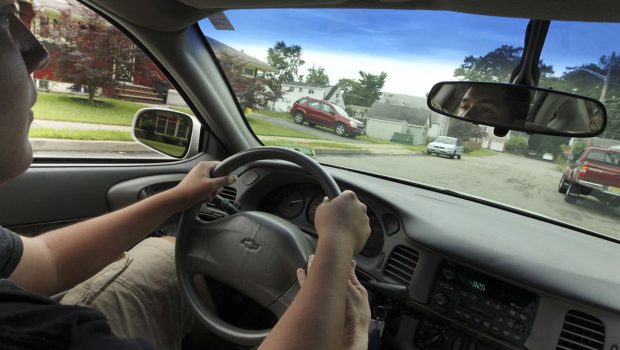Speed-limiting functions, real-time alerts: How new technologies could prevent teen driver deaths
STATEN ISLAND, N.Y. -- In recent years, research has shown that teen drivers are far more likely to be involved in a fatal crash than their older counterparts, but new technology could help buck that trend.
The Insurance Institute for Highway Safety (IIHS) recently released a new study finding that the use of common crash avoidance features, coupled with new teen-specific vehicle technologies, could prevent over 75% of teen driver deaths.
“We know these technologies don’t stop 100 percent of the crashes they’re designed to address, but our analysis shows that the potential benefits for teen drivers could be pretty stunning if they were widely used,” said IIHS Research Scientist Alexandra Mueller, the lead author of the paper.
Motor vehicle crashes are currently the leading cause of death for U.S. teens between the ages of 15 and 18, with speeding, low seat belt usage and inexperience playing a major role.
In 2018, over 2,100 Americans were killed in crashes involving teen drivers, with 719 of the deaths being the teen drivers themselves, according to a report from the Governors Highway Safety Association (GHSA).
From 2015 to 2019, speeding was a factor in 43% of all teen driver and passenger fatalities.
For all other age groups, speeding was a factor in just 30% of all roadway fatalities, indicating that teen driver and passenger deaths are disproportionately likely to involve a speeding motorist.
The new study from the IIHS found that teen drivers are four times as likely to crash as drivers over the age of 20, and are more likely to be involved in a fatal crash than any other age group, besides drivers over the age of 80.
Due to their inexperience, teen drivers have shown to be worse at recognizing and adjusting to on-road hazards. As a result, they are more likely to be involved in dangerous “run-off-road” and “loss-of-control” crashes.
Teens are also more likely to lose focus on the road and be involved in rear-end and right-angle crashes, while they are less likely to compensate for hazardous roadway conditions like wet roads and low visibility.
But researchers say that many of these issues can be mitigated through the use of popular crash avoidance technology, like front crash and lane departure prevention, and new teen-specific vehicle technology, like parent-controlled speed limiters and real-time driving alerts.
Teen-specific vehicle technologies, like Ford’s MyKey and GM’s Teen Driver, allow parents to set speed limits for their teen drivers and trigger gearshift or stereo system interlocks that activate when the front seat occupants aren’t wearing their seat belt.
Meanwhile, mobile apps, like Hyundai’s BlueLink and Grom Social’s MamaBear, can provide parents with teen driver report cards and allow them to receive real-time alerts whenever their child is speeding or driving past a set curfew.
Crash avoidance technologies, like lane departure warning, blind spot monitoring and automatic emergency braking (AEB), have been shown to reduce the types of crashes they are designed to prevent by 11%, 14% and 50%, respectively, according to the research.
If universally implemented for all teen drivers, these crash avoidance technologies could prevent over 120,000 teen driver crashes each year, according to the report.
Due to the novel nature of the teen-specific driving technologies, less is known about their effectiveness, though preliminary research indicates that they are likely to reduce speeding and increase seat belt usage.
To determine the potential benefits of implementing both crash avoidance and teen-specific technologies, researchers analyzed all crashes involving teen drivers from 2016 to 2019 where the presence of these technologies could have prevented the crash.
The study found that if all these technologies are in place and functioning as intended, they could prevent or mitigate 41% of all crashes involving teen drivers, 47% of teen driver injuries and 78% of teen driver deaths.
“Lack of access and lack of acceptance are two major barriers preventing these technologies from delivering on their full potential,” said Mueller. “Manufacturers should include these features in more vehicles and do a better job of communicating the benefits to parents and teens.”
FINDING THE RIGHT VEHICLE
Looking for the perfect car to keep your teen safe?
Whether you’re seeking a cheaper, used car that still affords high levels of safety, or you are willing to shell out some extra cash for a new model, we’ve got you covered.
Consumer Reports recently teamed up with the IIHS to compile lists of the best new and used cars for teen drivers.
Click here for the best new car models for teen drivers.
Click here for the safest, most affordable used cars for teen drivers.








Gloss